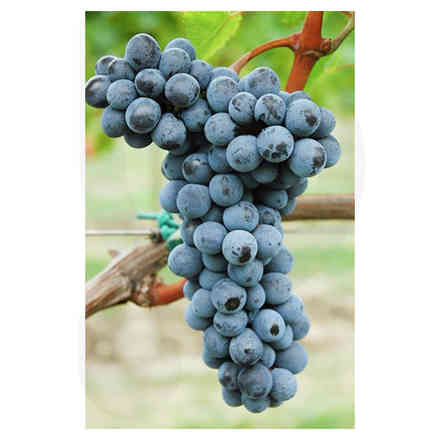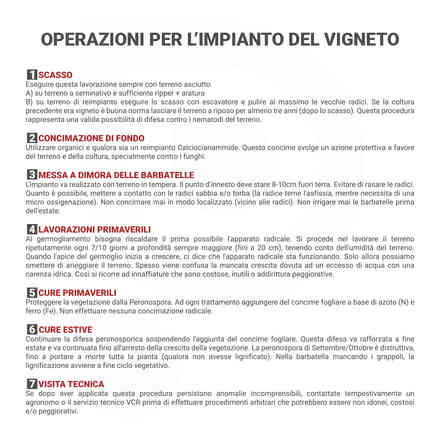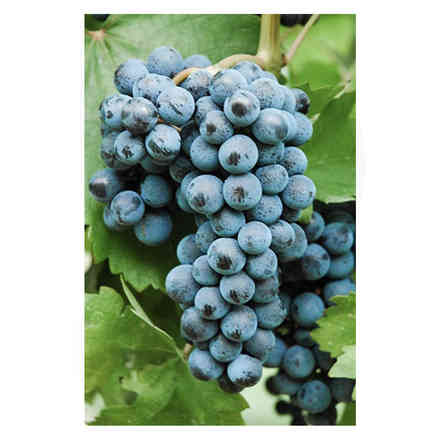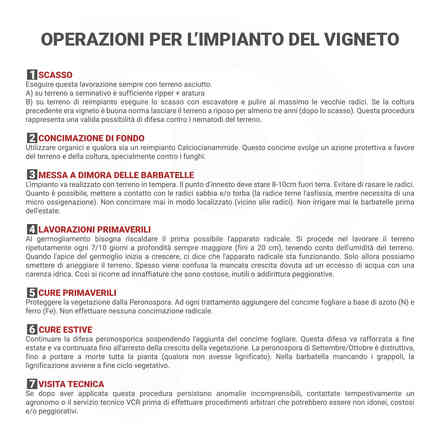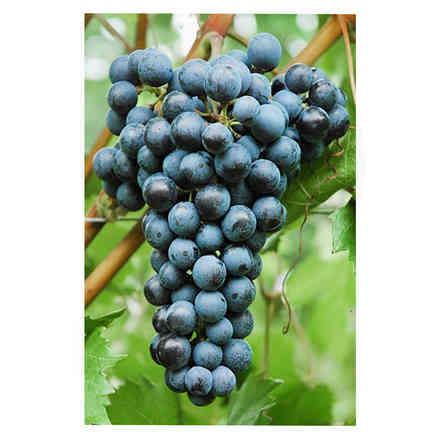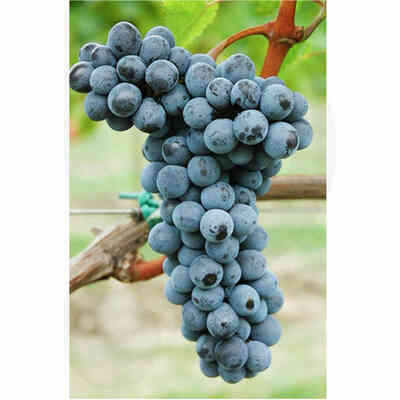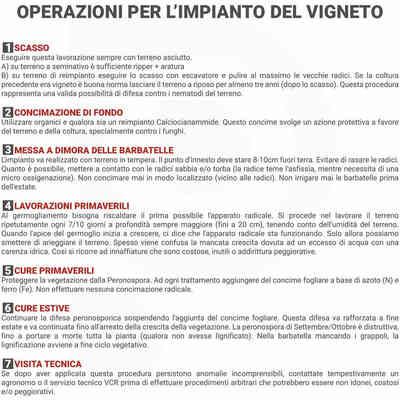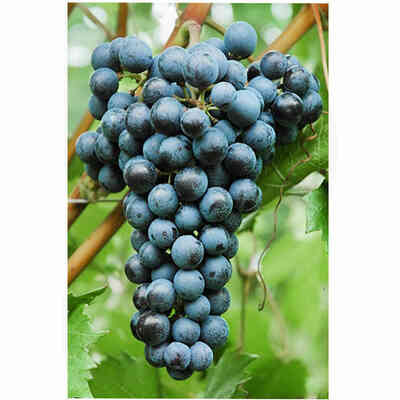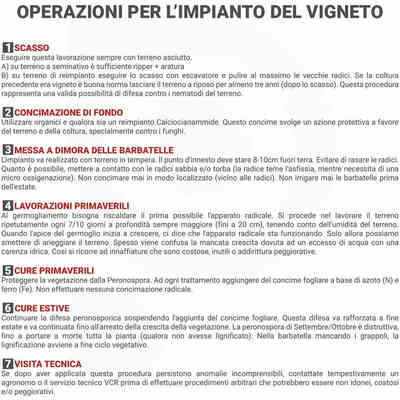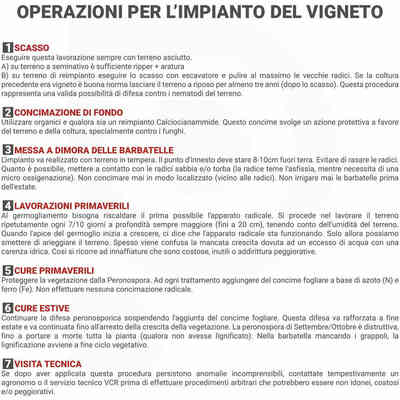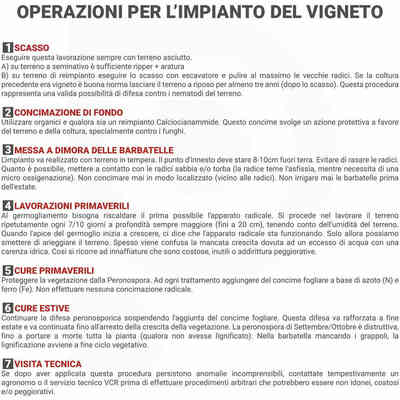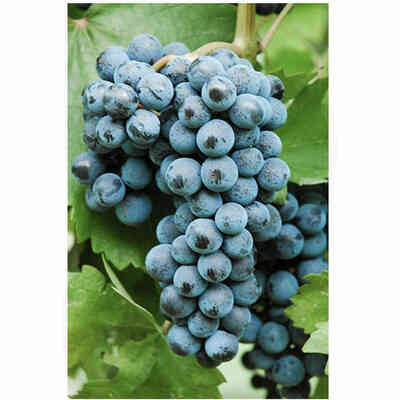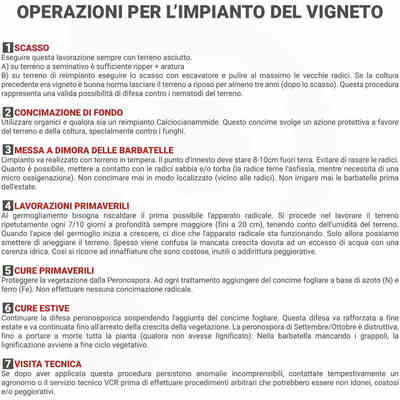Malvasia Nera (10 pieces)
Description
 AUTHORIZED RETAILER
AUTHORIZED RETAILER
MALVASIA NERA (10 pieces)
Graft carrier 1103P - K5BB - S04 - 140RU - 420A (Graft carrier available at the time will be sent)
Grape with a simple flavour. Cultivated mainly in Apulia, in the provinces of Lecce, Taranto and Brindisi.
- Ampelographic features: the variety is fairly homogeneous, differential characters often relate (erroneously) to other Malvasia varieties; within the variety the biotypes show only differences in bunch shape. Sprout with expanded apex, cottony, yellowish-white with pinkish shades. Leaves large, pentagonal, quinquelobate, thick blade, dark green, smooth, very little tomentum. Petiolar sinus with closed lyre. Lower page arachnoid. Cluster medium-large, semi-compact, truncated-conical with scarcely noticeable wings. Berry medium-large with fairly easy detachment, dark blue spheroid; skin pruinose, thin; pulp fleshy, simple flavour.
- Cultural aptitudes: moderately vigorous vine with upright vegetation; robust, branched shoot, medium-short internodes, luxuriant vegetation. Prefers medium-textured, even fertile soils, provided they are not excessively calcareous, and warm, dry environments.
- Cultivation and pruning: requires fairly expanded forms of cultivation and medium-long pruning, also adapting to short ones. It also adapts to fully mechanised forms without any difficulty.
- Sensitivity to disease and adversity: normal, sensitive only to powdery mildew.
- Oenological potential: gives a ruby red wine that is not too full, low total acidity, very high alcohol content, vinous, pleasant and characteristic aroma, dry, discreet, full-bodied, velvety. It is vinified with Negro Amaro and often without marc to obtain very pleasant, fruity, savoury rosé wines.
- Sprouting time: medium
- Ripening time: medium
Clones in multiplication: Malvasia Nera UBA69E, UBA70A
CULTIVATED AREA IN ITALY
YEAR 1970 1982 1990 2000 2010
HECTARES 6215 9114 6952 5592 2000
RULES TO PLANT A VINEYARD
1. PLOW
You must perform this operation always with dry soil
A) On arable land is generally sufficient to ripper + to plow
B) On planting soil is generally sufficient to plow with an escavator and to clean the old roots.
If the previous crop was a vineyard, it is a good idea to leave the soil fallow for at least three years (after plowing). This procedure represents a valid possibility of defence against soil nematodes.
2. SOIL FERTILIZATION
Use organics and if it is a reimplantation, use Calciumocyanamide.
This fertiliser has a protective effect on the soil and the crop, especially against fungi.
3.PROPAGATING GRAPE VINE CUTTINGS
The planting should be carried out in temperate soil. The grafting point should be 8-10 cm above ground. Avoid shaving the redices. As much as possible, put sand and/or peat in contact with the roots (the root fears asphyxiation, while it needs a micro-oxygenation). Never fertilize in a localized manner (near the roots). Never water the rooted cuttings before summer.
4.SPRING WORKS
When sprouting, the root apparatus must be heated as soon as possible. Work the soil repeatedly every 7/10 days at increasing depth (up to 20 cm), taking into account the moisture of the soil. When the apex of the bud starts to grow, it means that the root system is functioning. Only then can we stop watering the soil. Failure to grow due to access to water is often confused with a lack of water. This is why watering is used which is expensive, useless or even worse.
5.SPRING CURE
Protect vegetation from Peronospora. To each treatment add nitrogen (N) and iron (Fe) foliar fertilizer. Do not make any radical fertilization.
6.SUMMER CURE
Continue with the defense against Peronospora by suspending the addition of the foliar fertilizer. This defense should be reinforced in late summer and should be continued until vegetation growth stops.
The September/October blight is destructive, to the point of bringing death to the whole plant (if it has not lignified). The rooted vine lacks clusters, so lignification occurs at the end of the vegetative cycle.
7.TECHNICAL VISIT
If incomprehensible anomalies persist after this procedure, contact an agronomist or the VCR Technical Service promptly before carrying out arbitrary procedures which may be unsuitable, expensive and/or worsening.





















